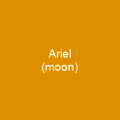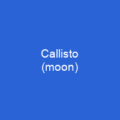Titan is the largest moon of Saturn and the second-largest natural satellite in the Solar System. Discovered in 1655 by the Dutch astronomer Christiaan Huygens, Titan is 50% larger than Earth’s moon and 80% more massive. The name Titan came from John Herschel in his 1847 publication Results of Astronomical Observations Made during the Years 1834, 5, 6, 7, 8, at the Cape of Good Hope.
About Titan (moon) in brief

4 times larger in the sky than the Moon from Earth. The atmosphere of Titan is largely nitrogen; minor components lead to the formation of methane and ethane clouds and heavy organonitrogen haze. The climate creates surface features similar to those of Earth, such as dunes, rivers, lakes, seas, and deltas, and is dominated by seasonal weather patterns as on Earth. Titan’s methane cycle bears a striking similarity to Earth’s water cycle, albeit at the much lower temperature of about 94 K. It was the sixth moon ever discovered, after Earth’sMoon and the Galilean moons of Jupiter. The small, irregularly shaped satellite is locked in an orbital resonance with Titan, which is based on chaotic models based on a chaotic evolution of the Hyperion from a chaotic planet. It was named after the mythological Titans, brothers and sisters of Cronus, the Greek Saturn. Other early epithets for Titan include \”Saturn’s ordinary satellite” and “Saturn I through V”. Titan is one of six gravitationally rounded moons from Saturn; it is the most distant from Saturn of those six. It is likely differentiated into a rocky core surrounded by various layers of ice, including a crust of ice Ih and a subsurface layer of ammonia-rich liquid water. The geologically young surface is generally smooth, with few impact craters, although mountains and several possible cryovolcanoes have been found in Titan.
You want to know more about Titan (moon)?
This page is based on the article Titan (moon) published in Wikipedia (as of Dec. 06, 2020) and was automatically summarized using artificial intelligence.







